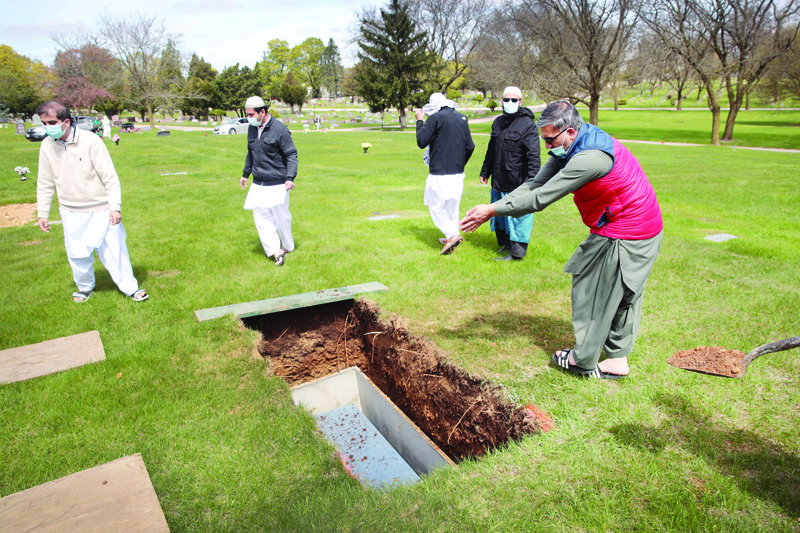
WASHINGTON: US President Donald Trump now says his worst-case coronavirus scenario would be 100,000 deaths, but the country will probably reach that grim milestone by next month, according to several scientific models-none of which predict a summertime halt to the virus's spread. "We're going to lose anywhere from 75,000, 80,000 to 100,000 people. That's a horrible thing," Trump said Sunday evening at a virtual town hall meeting on Fox News.
The Republican incumbent, who is vying for re-election in November, argued that without lockdown measures that have crippled the world's biggest economy, the toll would have been far greater-more than 1.2 million "at a minimum." But Trump's end-game figure is likely far lower than the reality-the country has already seen 68,000 confirmed deaths, with about 30,000 new cases per day throughout April, and several states have started reopening before having brought the virus under control. Trump's own White House says 100,000 to 240,000 Americans will die from COVID-19.
According to an internal report by the US Centers for Disease Control and Prevention (CDC), cited by The New York Times, new cases are expected to surge from mid-May, hitting 200,000 per day by June 1, with the daily death toll almost doubling to 3,000. Even if lifting lockdown measures did not cause case numbers to spike, the nature of the epidemic is such that more bleak figures are inevitable. "My personal best guess is that we are going to reach 100,000 deaths around the beginning of June," Nicholas Reich, an associate professor of biostatistics at the University of Massachusetts said.
Reich's lab has looked at several major models to come up with an average trajectory for the epidemic's development-that curve indicates the United States can expect to hit 90,000 deaths by May 23. And yet, many Americans appear to have already decided they have had enough of living under lockdown-according to anonymous data provided by phone apps and other platforms and analyzed by the Institute for Health Metrics and Evaluation (IHME) at the University of Washington.
"There have been many, many states where mobility is starting to go up, even before the social distancing mandates are coming off," said the institute's director Christopher Murray. "This rise in mobility, the last week or 10 days, is likely leading to some increased transmissions." The IHME-whose initial projections for the pandemic were criticized as too optimistic-has heavily revised its forecast: from 72,000, it now predicts 134,000 people will die of COVID-19 by August 4. It expects the 100,000 mark to be reached by May 21.
Big country
Of nine models cited on May 1 by the CDC, at least three of them predicted that 100,000 fatalities would be recorded in four weeks' time, including two put together by Columbia University in New York. One from the Massachusetts Institute of Technology bets on 113,000 deaths by June 1. Few current models go beyond a four-week window, given the uncertainty of the situation. And of course, all of these forecasts come with the usual margin of error-sometimes totaling tens of thousands of deaths. Epidemiologists consistently caution that no model should be taken on its own, as each is based on different hypotheses.
The most difficult element to factor in is how people will behave over the coming months. Will they wear masks in public? How many will keep working from home? How many "non-essential" trips will people make to stores or restaurants? When will the country return to pre-pandemic standards of going out, or will it ever? "We're at an inflection point right now, where some states are opening up, and some aren't," Reich said. "There's an added layer of uncertainty."
In the United States, initial hotspots like New York and New Jersey have been replaced by new ones. In Texas, Illinois and the US capital, the number of new cases is growing. In California and Florida, it is starting to level off. "The epicenters of today may not be the epicenters of tomorrow," said David Rubin, a physician at the Children's Hospital of Philadelphia who also teaches at the University of Pennsylvania.
His team identified heat as a moderating factor that could help keep the death toll down, but he warned: "Temperature alone is not going to save you," including in places like Texas where stores have reopened. IHME researchers found a similar correlation: for every degree Celsius increase, they observed about a two percent drop in transmission, according to Murray-although he cautioned that social distancing remained far more effective than sunshine in curbing transmissions.- AFP









